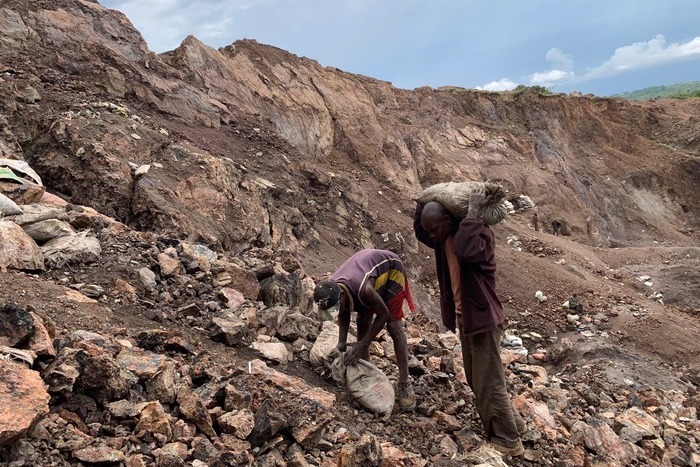Increased mining activities will lead to an upsurge in informal employment, which can exacerbate the risk of exploitation
As the world gears towards an energy transition towards greener forms, there will be an increase in mining activities for critical minerals. While that might drive employment, a significant chunk of it will be in the informal sector, which gives rise to social risks ranging from labour conditions to economic disparities.
The existence of social risk, and its degree, from activities such as mining for rare earth elements – critical components of the supply chain for green energy forms – is the scope for investigation of a new study published in Nature.
Titled ‘Selected social impact indicators influenced by materials for green energy technologies’, the study focused on critical materials like rare earth elements, nickel, silicon, graphite, magnesium, gallium, germanium, indium, aluminium, cobalt, lithium, zinc, and tellurium used in wind turbines, electric vehicles, lithium-ion batteries and solar photovoltaic panels, and the effects of their mining on work safety, gender equality, informal employment, labour income share, employment rate, and child labour.
The study’s findings included that aluminium production brings the highest rate of employment and chances to generate income, while extracting metals such as cobalt, lithium, silicon, and zinc were fraught with social risks.
Chances for economic growth
A just transition is quite likely to create or increase social and environmental tensions, found the report, as the increased usage of green energy has spurred a higher consumption of non-renewable materials.
Activities such as mining affect local communities from changing their physical habitable space to changing some demographics and cultural characteristics, and strongly impacting the economic, environmental and social aspects of life of local communities, according to the study.
With an increased investment in mining in the future, there will be a rise in income from mining and related infrastructural activities, from exploration, and extraction to transportation and processing. This can have a positive impact on the regions where mining is taking place, by initiating development and economic growth, found the study. It cited examples from Australia, Burundi, Madagascar, Myanmar, Thailand, the US, and Vietnam, where the reopening of mines for the extraction of rare earth minerals in 2020 led to the increase of labour income.
Conversely, closing REE mines in Malaysia, cobalt mines in Botswana, and zinc mines in Bolivia caused approximately 1% decrease in their total labour income, while closing a silicon mine in South Africa caused a 3% decrease in the total labour income, found the report.
According to the study, higher labour income can also generate employment and facilitate economic growth. It found that Australian mining industries will provide the highest global labour income as part of GDP (nearly 24%) in the whole period between 2010 and 2030. Similarly, labour income from mining activities as part of GDP will increase in Papua New Guinea (~11%), Russia, and Canada (~10%).
The social effect
However, in scenarios where artisanal or small-scale mining happens, especially in developing countries, there can be a higher social risk as there are lesser regulatory safeguards and protections, which can lead to labour informality, weak fiscal capacity, and inequalities, found the study.
The biggest effect is widespread informal labour, which constitutes a significant percentage of the workforce, across multiple countries. According to the study, Madagascar, Indonesia, Bosnia, Chile, Zimbabwe, Bolivia, Peru, and the Democratic Republic of Congo heavily use informal labour for mining different minerals required for the green energy transition.
Another significant negative impact is child labour, which can affect health, education opportunities, and overall well-being. The study found that child labour constitutes 15% and 6% of the workforce in Zambia and Zimbabwe’s cobalt mining, respectively, and 2% in South Africa’s cobalt and silicon mining, followed by approximately 1% in Chile and DRC’s mining activities.
The study pointed out that if current policies exist, then child labour percentage might shoot upwards of 20% for Zimbabwe, and 4% for Madagascar by 2030.
If looked at through the lens of the minerals themselves, mining of graphite, lithium, cobalt and silicon showed the most changes in solving the child labour issue, according to the study.
To reduce the negative impacts as a result of the energy transition, it is important to combine strategies which will ensure welfare maximisation and minimization of environmental externalities, suggested the study.
It named policies such as tax credits for energy-efficient homes or appliances, subsidies for public transportation, education campaigns to promote energy-saving behaviours and implement technology policies, e.g., the use of recycled content in energy storage applications from January 2027, as ways to achieve that.
About The Author
You may also like
Can green trade barriers save the environment?
Rise in Fossil Fuel Burning is Making Floods Lethal in Asia
Climate Governance Shows Progress, But Gaps Still Remain 10 yrs After Paris Agreement: Report
A Fifth of Migratory Species Face Extinction from Climate Change: Report
Climate change, unplanned construction and a malfunctioning dam can worsen the flooding in north Bengal

